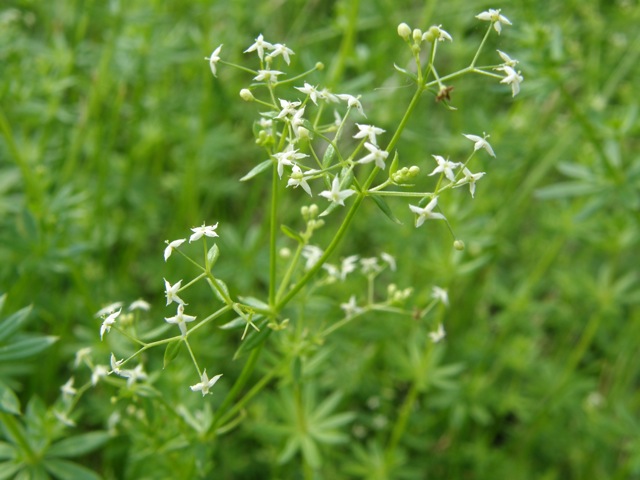Rubiaceae, the bedstraw family.
Description:
Plant:
Erect, slender, squarish, sometimes branching stems with periodic whorls of
leaves, and loose, branching clusters of small white flowers, 1'-2'.
Perennial.
Flowers:
White, tiny, with four pointed petals, and four stamens.
In loose, branching, terminal clusters.
Leaves:
In whorls of 8, or sometimes 6 higher on the stem, that occur periodically
along the stems. Leaflets narrow, obovate, with fine marginal hairs, 1/2"-1".
Fruit:
Dry, smooth capsule.
Blooming:
June-August
Habitat:
Fields, roadsides.
Comments:
One of several bedstraws in our area, this one is introduced from Europe.
The plant is also known as Wild Madder.
It is related to the true madders (Rubia species) from which the red
dye is obtained.
The foliage has a pleasant scent, recalling new-mown hay.
One legend has it that bedstraw was in the manger in which the baby
Jesus was laid.
Where to find it:
Patches west of the bike path as it runs south from the park entrance.
